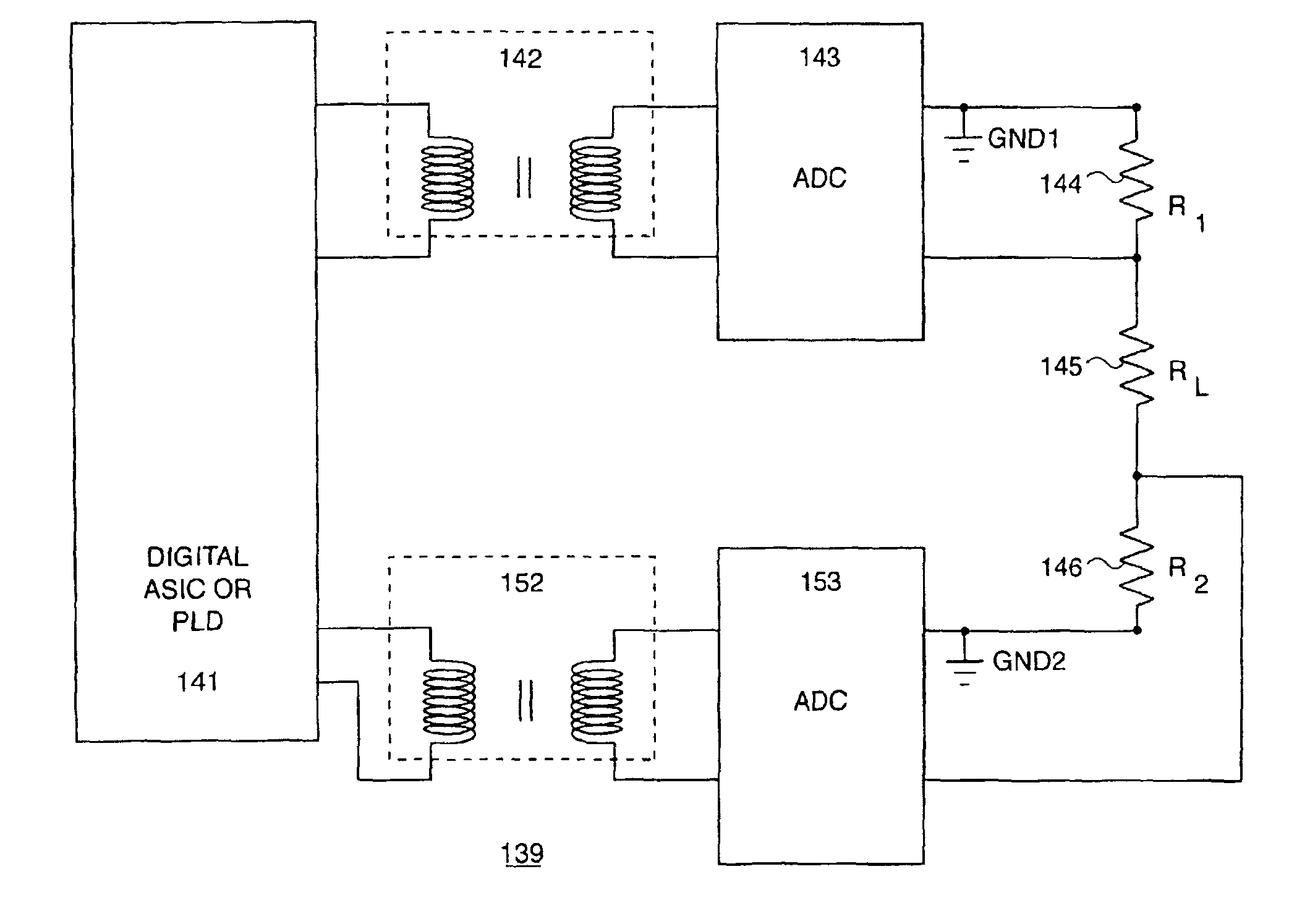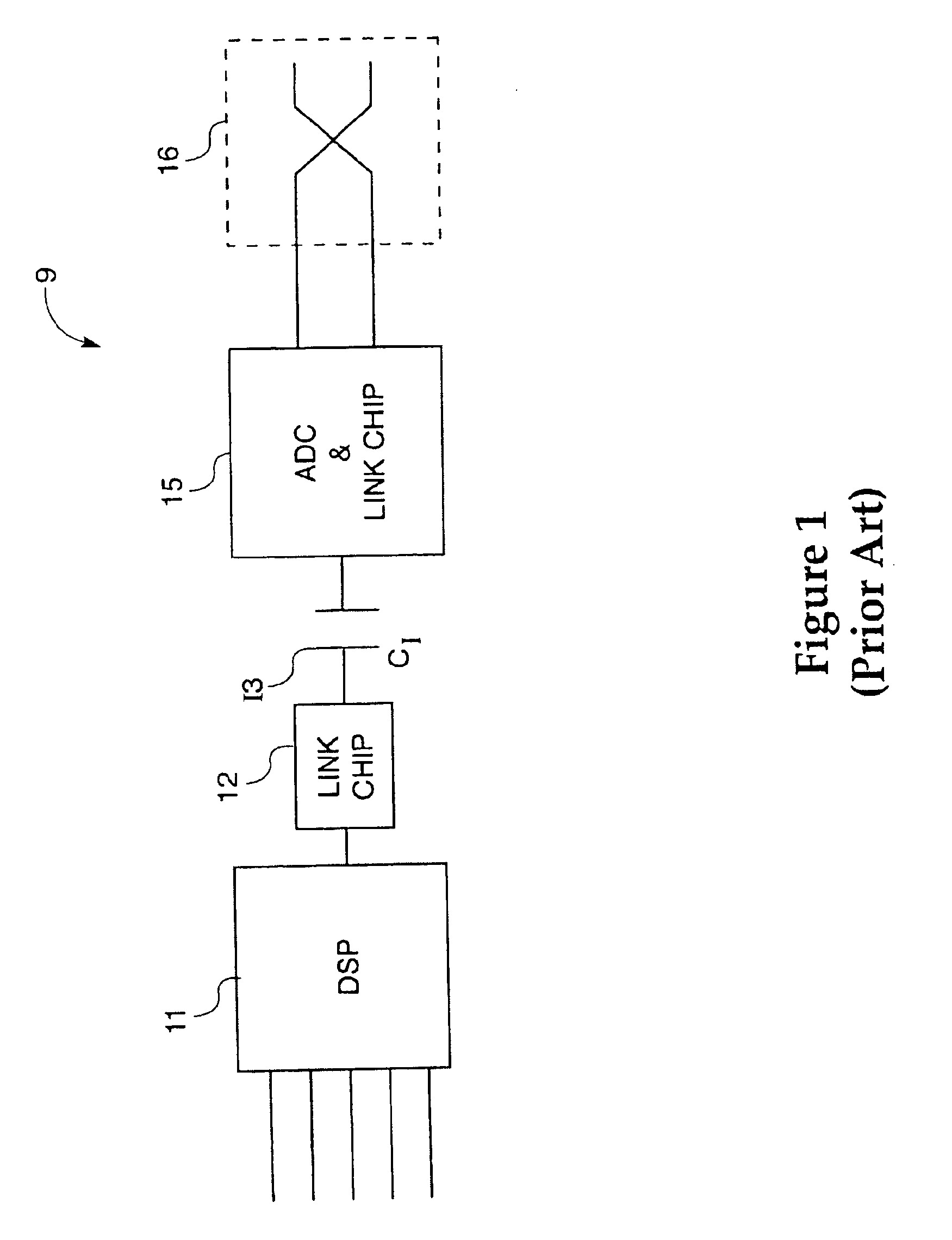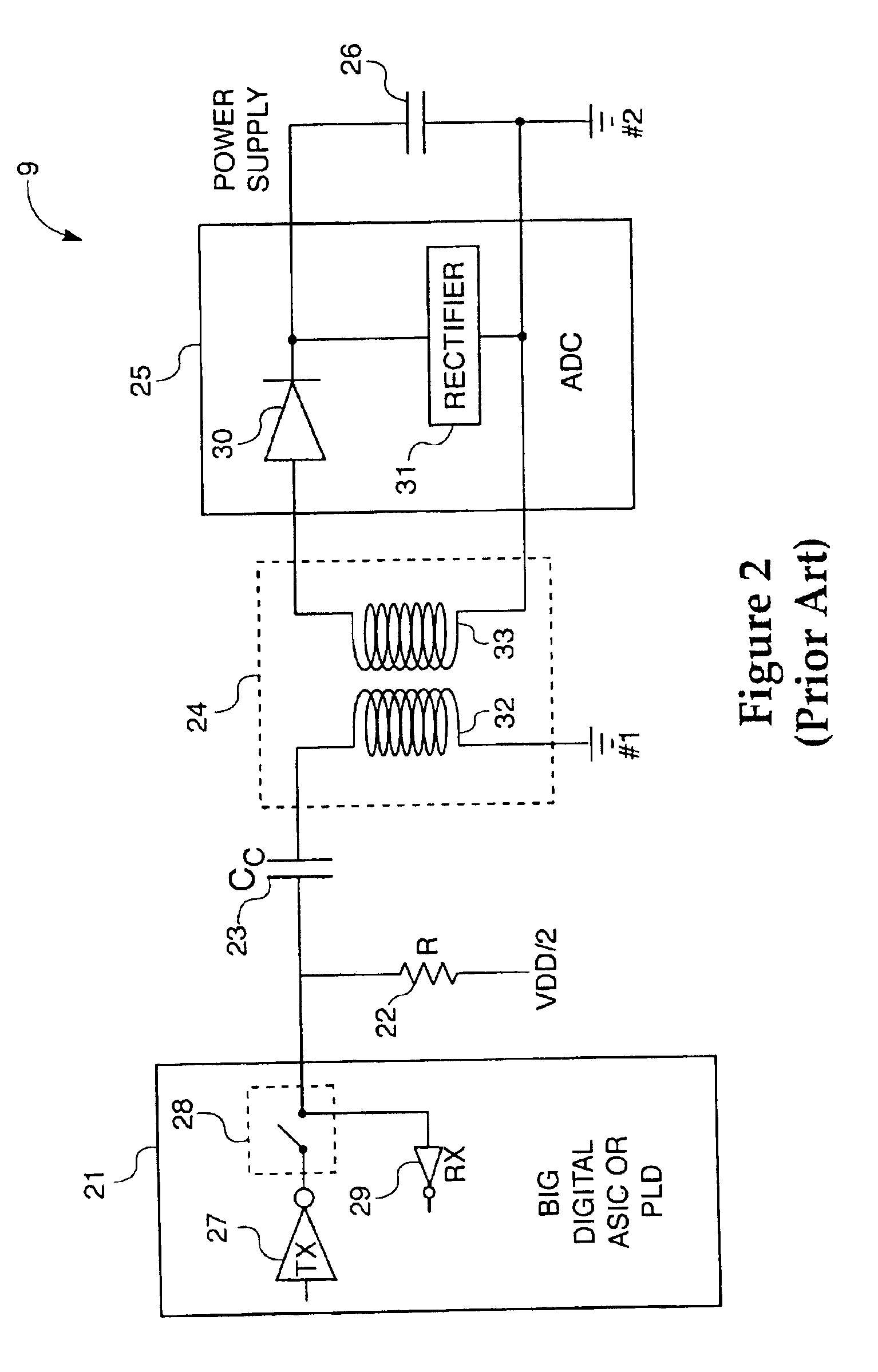Calibration of isolated analog-to-digital converters
an analog-to-digital converter and calibration technology, applied in the field of analog-to-digital converter calibration, can solve the problems of difficult calibration of adc, inability to provide each adc with a precise reference, and gain and offset of individual channels, so as to eliminate the effects of drift in the different channels and eliminate the effect of selected gain and offset effects
- Summary
- Abstract
- Description
- Claims
- Application Information
AI Technical Summary
Benefits of technology
Problems solved by technology
Method used
Image
Examples
Embodiment Construction
[0029]Referring now to FIG. 3, there is known a block diagram of a two channel isolated analog-to-digital converter system 139, wherein the analog-to-digital converter 143 and 153 are isolated from the microprocessor or programmable logic device 141 by first and second transformers 142 and 152, respectively.
[0030]System 139 includes a microprocessor or programmable logic device 141 which is coupled to first and second analog-to-digital converters 143 and 153 through respective first and second transformers 142 and 152. A current limiting / isolating resistor RL 145 may limit overall current and isolate the two calibration resistors R1, 144 and R2 146 from one another. First and second calibration resistors R1 144 and R2 146 may be coupled to the outputs of analog-to-digital converters 143, and 153, respectively.
[0031]First and second analog-to-digital converters 143, and 153 may be referenced to respective local grounds GND1 and GND2, which may be at very different potentials. In norm...
PUM
 Login to View More
Login to View More Abstract
Description
Claims
Application Information
 Login to View More
Login to View More - R&D
- Intellectual Property
- Life Sciences
- Materials
- Tech Scout
- Unparalleled Data Quality
- Higher Quality Content
- 60% Fewer Hallucinations
Browse by: Latest US Patents, China's latest patents, Technical Efficacy Thesaurus, Application Domain, Technology Topic, Popular Technical Reports.
© 2025 PatSnap. All rights reserved.Legal|Privacy policy|Modern Slavery Act Transparency Statement|Sitemap|About US| Contact US: help@patsnap.com



